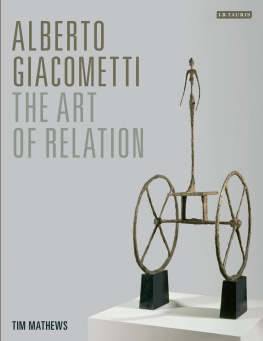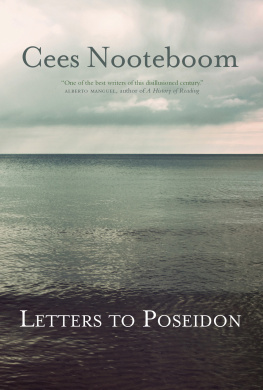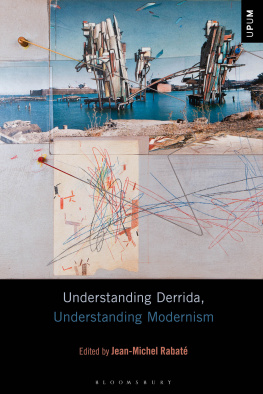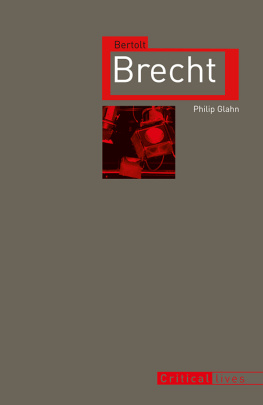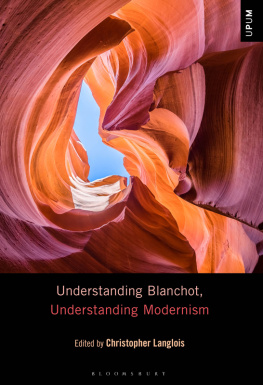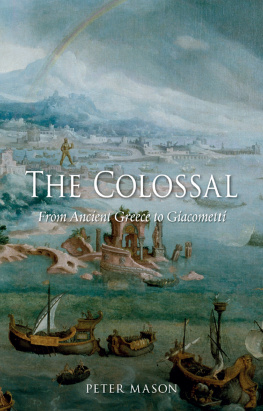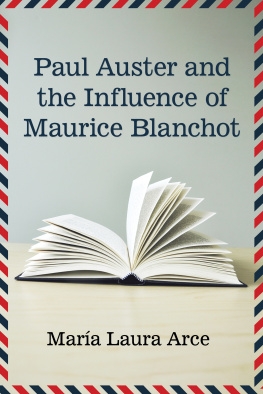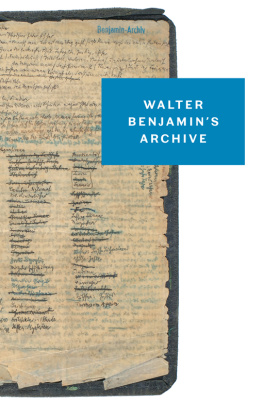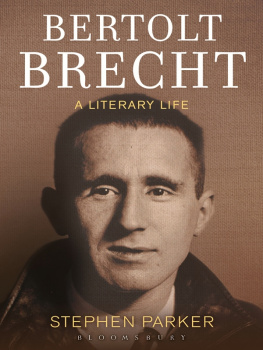Timothy Mathews is Professor of French and Comparative Criticism at UCL. He is the author of Reading Apollinaire (1990) and Literature, Art and the Pursuit of Decay in Twentieth-Century France (2006). He is co-translator with Delphine Grass of Michel Houellebecq, The Art of Struggle (2010) and co-editor with Jan Parker of Tradition, Translation, Trauma (2011).
This relational writing is deeply moving. Timothy Mathews calls on and calls forth the many persons concerned for him in the viewing and feeling and touching of Giacometti pieces: here are Beckett and Sebald, Benjamin and Barthes, and the best readers such as Didi-Huberman. Mathews will impress with the sensitivity of both his seeing and his style.
Mary Ann Caws, Distinguished Professor of English, French, and Comparative Literature, Graduate School, City University of New York
In Timothy Mathewss both analytic and empathetic view, Giacomettis work becomes the intellectual site, where a question can be asked, discussed, but never conclusively answered, that I find more decisive, in the immateriality of our digital environment, than ever before. It is a question about the threshold where artistic form turns into an intense presence whose challenge exceeds all other types of interaction.
Hans Ulrich Gumbrecht, Albert Gurard Professor in Literature, Stanford University
Timothy Mathewss writing vividly conveys what it is like to see, to point towards, to be in the same space as Giacomettis precariously balanced, elongated, poignantly caged, suffering figures. His account of the ways in which he and others have responded to Giacomettis sculpture is full of discoveries. The reader is invited to share in the process of discovery through the writings of Beckett and Benjamin, Blanchot and Sebald; andmost of allthrough the words of Giacometti himself. This is art writing at its most exciting and humbling. It conveys why we look, and look again at the human form as only Giacometti gives it to us to see, with all its burden of traumatic history.
Mary Jacobus, FBA, CBE, Professor Emerita, University of Cambridge, Professor Emerita, Cornell University
Timothy Mathewss indispensable study of Giacometti takes us into the volatile contact zone between sculpture and spectator, with its complex reciprocities which multiply questions, destabilize values and redefine relations. This wonderfully exhilarating adventure in polymorphous looking, written from within his own experience, calls on comparison (e.g. Beckett, Ernst, Benjamin, Breton, Blanchot) to give critical purchase to the pursuit of an elusive quarry, where emergence and dissolution, recognition and alienation strike up strange mutualities. Mathews tirelessly, resourcefully, enthrallingly confronts the question: What kind of perceptual world do we enter if we refuse the tyranny and partiality of a point of view?
Clive Scott, Professor Emeritus of European Literature at the University of East Anglia
This is an extraordinary book. Thinking of form as responsive, Timothy Mathews opens urgent questions about the way art speaks of life, about witness and embodiment. Addressing the art of relation, this book places Giacometti in contact with Benjamin, Beckett, Sebald among others. Through its series of acute, exploratory and often deeply moving readings, we are brought to respond vividly, newly, to Giacomettis sculpture and writing.
Emma Wilson, Professor of French Literature and the Visual Arts, University of Cambridge
ALBERTO
GIACOMETTI
THE ART
OF RELATION
TIMOTHY MATHEWS

Published in 2014 by I.B.Tauris & Co Ltd
6 Salem Road, London W2 4BU
175 Fifth Avenue, New York NY 10010
www.ibtauris.com
Distributed in the United States and Canada Exclusively by Palgrave Macmillan
175 Fifth Avenue, New York NY 10010
Copyright Timothy Mathews, 2014
The right of Timothy Mathews to be identified as the author of this work has been asserted by the author in accordance with the Copyright, Designs and Patent Act 1988.
All rights reserved. Except for brief quotations in a review, this book, or any part thereof, may not be reproduced, stored in or introduced into a retrieval system, or transmitted, in any form or by any means, electronic, mechanical, photocopying, recording or otherwise, without the prior written permission of the publisher.
ISBN:978 1 78076 786 4 (HB)
978 1 78076 787 1 (PB)
eISBN: 978 0 85773 509 6
A full CIP record for this book is available from the British Library
A full CIP record is available from the Library of Congress
Library of Congress Catalog Card Number: available
Typeset by JCS Publishing Services
Contents
Illustrations
Alberto Giacometti, La Cage , c.194950
2 Alberto Giacometti, Femme debout , c.1952
Alberto Giacometti, Cube , 1934
Alberto Giacometti, La Cage , 19301
douard Manet, The Dead Toreador , 1864
The Seated Scribe , 26202500 BCE
Alberto Giacometti, Le Palais quatre heures du matin , 19323
Alberto Giacometti, Boule suspendue , 1931 (1965 version)
Alberto Giacometti, Objet dsagrable jeter , 1931
Salvador Dal, The Bather , 1928
Alberto Giacometti, Pointe loeil , 1932
12 Alberto Giacometti, Femme gorge , 1932
Alberto Giacometti, La Main , 1947
Rembrandt, Noli me tangere , 1651
Alberto Giacometti, Le Nez , 1947
douard Manet, The Execution of Maximilian , 18689
Alberto Giacometti, Trois hommes qui marchent , 1948
Alberto Giacometti, Quatre figurines sur base , 1950
Alberto Giacometti, Tte sur tige , 1947
Alberto Giacometti, Petit buste de femme sur socle (Marie-Laure de Noailles) , c.1946, cast 1973, 4/8
Paul Klee, Angelus Novus , 1920
Alberto Giacometti, LHomme qui marche , 1947
Alberto Giacometti, Homme qui marche I , 1960
Teasmade (Image from W. G. Sebalds The Emigrants )
Carl Gotthard Langhans, The Brandenburg Gate , 1788 and 1791
The Charioteer of Delphi , 474 BC
Pablo Picasso, Figure (propose comme projet pour un monument Guillaume Apollinaire) autumn , 1928
Georges Braque, Woman Reading , 1911
Pablo Picasso, Tte de femme , 192930
Alberto Giacometti, Le Chariot , 1950
Alberto Giacometti, Le Couple , 1927
Alberto Giacometti, Femme cuillre , 1927 (1953 version)
Alberto Giacometti, Femme qui marche I , c.19326
Alberto Giacometti, LObjet invisible (mains tenant le vide) , 1934
Alberto Giacometti, Tte qui regarde , 1929
Alberto Giacometti, Grande Tte de Diego , 1954
Alberto Giacometti, La Cage , 1950
Alberto Giacometti, Figurine dans une bote entre deux maisons , 1950
Alberto Giacometti, La Clairire (composition avec neuf figures) , 1950
Alberto Giacometti, Grand nu , c.1961
Alberto Giacometti, La Fort , 1950
42 Max Ernst, Nageur aveugle, effet dattouchement , 1934
Max Ernst, La Grande Fort , 1927
Alberto Giacometti, La Place II , 19489
45 Alberto Giacometti, Femmes de Venise , 1963 or 1964
Alberto Giacometti, Homme assis [Lotar III] , 1965
Acknowledgements
Writing this book involved me in re-thinking and re-learning critical writing as I am given to understand it. An experience like that cannot develop without numerous acts of kindness and inspiration some passing, some very long-standing, all of them crucial of many people, and I hope none will mind that I simply list some of them here: Charlotte Arnold, Richard Aronowitz-Mercer, Brett de Bary, Helena Buescu, Simon Cooke, Jacqueline Chnieux Gendron, Martin Crowley, Theo Dhaen, Csar Domnguez, Jane Fenoulhet, Patrick ffrench, Claude Frontisi, Marisa Galvez, Jane Gilbert, Roland Greene, Sudeshna Guha, Nicholas Hammond, Stephen Hart, Eivind Kahrs, Sarah Kay, Dilwyn Knox, Lucy Dawe Lane, Svend Erik Larsen, Rod Mengham, Michael Moriarty, Sharon Morris, Florian Mussgnug, Patrick ODonovan, Richard Parish, Jan Parker, Peg Rawes, Jane Rendell, Ellen Sapega, Elinor Shaffer, Morag Shiach, Judith Still, Nicholas White, Nikola White, Emma Wilson, and the undergraduates, MA, and PhD students in French and in Comparative Literature at UCL, from whose energy and commitment to art I have learnt so much.

